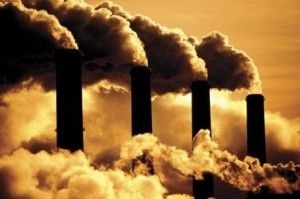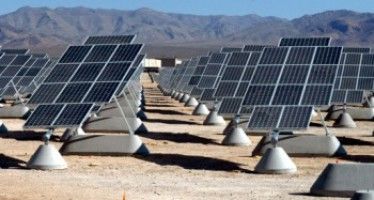Great Recession short-circuits CARB’s Cap and Trade auction
By Wayne Lusvardi
Recessions are painful, especially for those who lost their jobs. But there is one upside to less economic activity: lower levels of pollution.
Ironically, the Great Recession short-circuited the California Air Resources Board’s auctions for pollution permits under its new Cap and Trade program. Cap and Trade was instituted as part of AB 32, the Global Warming Solutions Act of 2006. AB 32 mandated reductions of 25 percent in greenhouse gases emitted in California. Ironically, it was passed just before the Great Recession slammed California harder than any other states except Nevada and Rhode Island.
What Cap and Trade is
Cap and Trade is a pollution management system that sets a maximum cap on how much pollution is allowed for each industry or utility. If a company emits less pollution than its cap, it has “credits” it may sell to others that exceeded their caps. The selling is done through the CARB Cap and Trade system.
Conversely, if a company exceeds its pollution cap it, has to buy credits from CARB. Cap and Trade is a system to disguise pollution fines or taxes as a market-trading system.
CARB’s primary Cap and Trade market holds auctions quarterly.
A secondary sales market is held periodically for trading companies and banks also to participate. This secondary market of traders and bankers is essentially an insurance market where polluters can hedge their losses, just as farmers buy insurance to protect against crop damage from hail or frost. The secondary market can involve speculation.
Both primary and secondary markets can be “gamed” for advantage by buyers and sellers.
The California Air Resources Board scheduled a supplementary auction of pollution permits for March 2013. But no industries or electric utilities filed the required “intent to bid” notice by the bid guarantee deadline of Feb. 27.
That meant no private industries or public utilities exceeded their government-set pollution maximums and needed to “buy” extra pollution permits after CARB’s Feb. 19 Cap and Trade auction. Most industries seem to be buying pollution permits rather than installing more pollution reduction technologies, which had been a major goal of AB 32.
The lack of bidders is a signal that the economy is not booming and polluting more, requiring pollution permits to meet growing demands for goods and services. Instead, the still sluggish economy has reduced pollution on its own.
In a similar fashion, European Union’s Cap and Trade program recently failed when hit with bad economic times where there was no need to buy pollution permits because industrial output fell too low.
Edison bailed out first cap and trade auction
At CARB’s first ever Cap and Trade auction back on Nov. 14, 2012, Edison International bought up 72 percent of all the pollution permits and thus bailed out the auction from failure. By doing so, it can be said that Edison bought disproportionate influence over CARB. This is called “regulatory capture,” where a dominant industry or corporation can “capture” a government regulatory agency for its own special interests.
CARB sold 12.9 million pollution permits — called “allowances” — at its Feb. 19, 2013 auction, with an average price of $13.62 per metric ton of air pollution. This reflected $176 million in “permit sales” — really taxes — collected from private industries and electric utilities. It has not been revealed yet who the bidders were for the Feb. 19 auction, or how many permits each bidder bought. The unsold permits from March will be offered at a reserve price of $40 to $50 per ton at an upcoming auction on June 27.
Arguably, since 2008, the economic contraction has caused a greater reduction in air pollution than from California’s Cap and Trade program. Industrial production and electric power only generate about 40 percent of all carbon emissions into the air; while transportation — cars, trucks, and buses — generates about 38 percent.
CARB scheduled an extra pollution diet for March 2013. But all the pollution hogs already went on a “no CARB” diet. It remains to be seen if a Cap and Trade system is sustainable during protracted economic downturns.
Related Articles
The evidence still shows California exodus
Oct. 24, 2012 By Wayne Lusvardi Scientist Carl Sagan once came up with a “baloney detection kit.” Perhaps columnist Dan
Companies, jobs streaming out of Calif.
Sept. 29, 2012 By John Seiler The progressive California utopia foisted on us by ex-Gov. Arnold Schwarzenegger and current Gov.
Enviros battle over merits of rooftop solar vs. desert solar
Things aren’t working out well for renewable energy advocates who hoped cheaper rooftop solar energy would replace large solar power




